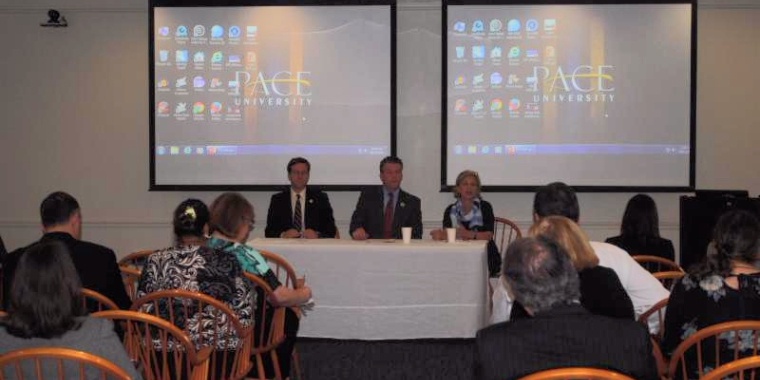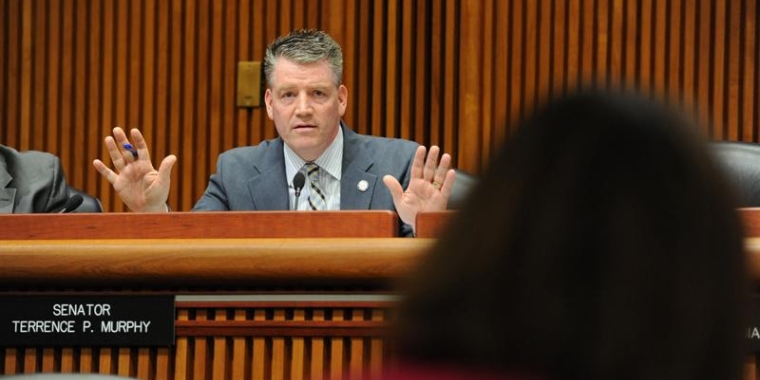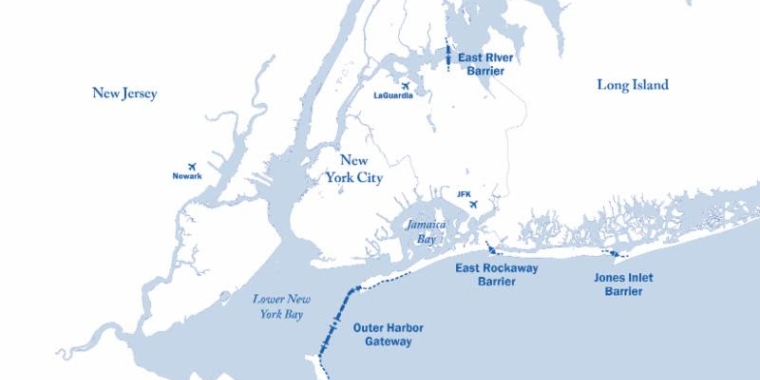
Waterway revitalization workshop helps municipalities implement new regulations
October 14, 2015

PLEASANTVILLE, NY - Elected officials, planning board members and planning department staff from county and local governments throughout Westchester today learned how to submit a local waterfront revitalization plan (LWRP) at a conference sponsored by State Senator Terrence Murphy and Assemblyman David Buchwald. The two organized the summit, held at Pace University, to help municipalities access funding now available as a result of their inland waterway designations, conferred by four pieces of legislation authored and passed by the two lawmakers which were signed into law earlier this year.
"The LWRP is a locally prepared, comprehensive land and water use plan for a community's waterfront area, crafted through public participation with the goal of long-term revitalization" Senator Murphy said. "LWRPs can become a vital part of the local planning and zoning process, efficiently guiding local development and helping our municipalities access critical funding for water quantity initiatives like flood and erosion control, water quality projects like sewers and waste-water treatment, and economic development initiatives like waterfront development. Step one was passing the laws, and step two is implementing them, but nothing will make me happier then to one day drive down the Saw Mill River Parkway in a storm and not see flooding, a process which begins here today."
"New York State has opened the door for Westchester to significantly improve its water quality and mitigate flooding," Assemblyman Buchwald said. "Revitalizing our waterways and working to reduce flooding is imperative to sustaining the high quality of life for Westchester residents. It is great to bring environmental experts and local officials together to discuss bettering the quality of the tremendous natural resources that Westchester communities have to offer."
Speakers were on hand from the New York State Department of State, Department of Environmental Conservation and Pace University Environmental Law Center to explain how the LWRP process can benefit municipalities in the county with frontage on the Bronx, Pocantico and Saw Mill rivers.
Nicholas Robinson, professor of law at Pace University Enviromental Law Center, said "Inland waterway legislation is a phenomenal enhancement to enable local governments to cope with the increased challenges of improving water quality and reducing flooding."
The conference discussed how LWRPs have the potential to efficiently guide community and coastal and inland waterway development in a coordinated fashion across municipal boundaries. "Although we cannot become experts overnight, my hope is that in the months ahead you will learn and utilize this planning technique and in a year or so begin participating in the state funded Local Waterfront Revitalization Program one your LWRP is drafted and approved by the state and federal government," Murphy added.
LWRPs analyze waterfront issues, opportunities and constraints and resource protection needs and include strategies for addressing critical waterfront issues such as enhancing public access, revitalizing underutilized waterfront areas, protecting natural and historic resources, improving water quality and protecting open space and scenic resources.
Funding is available for approved LWRPs through the state's consolidated funding application process with priority consideration being given to proposals which advance the NY Rising Community Reconstruction Plans, and regional strategies developed by the ten Regional Economic Development Councils. There are other grant programs available for inland waterways with approved LWRPs through the Department of State and the state's environmental protection fund, lawmakers said.



